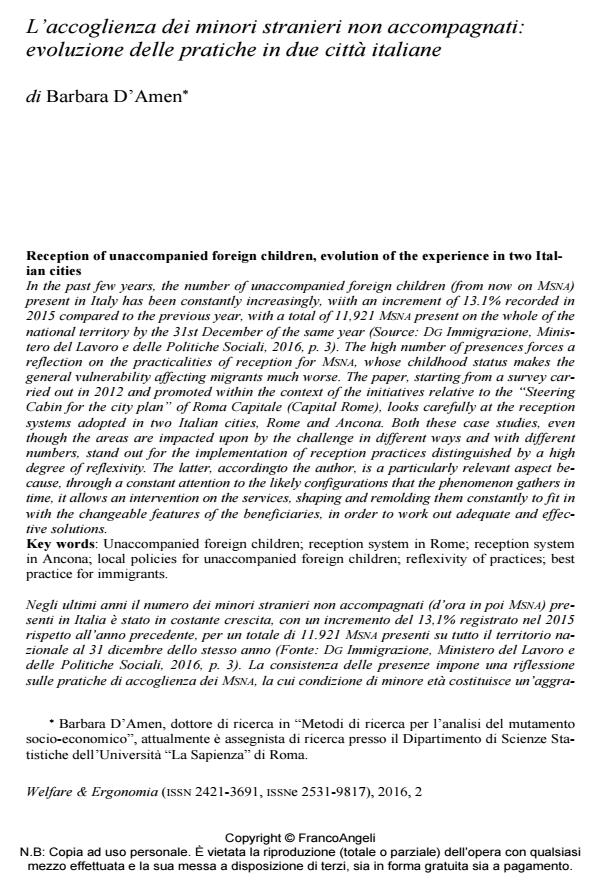Reception of unaccompanied foreign children, evolution of the experience in two Italian cities
Journal title WELFARE E ERGONOMIA
Author/s Barbara D’Amen
Publishing Year 2017 Issue 2016/2
Language Italian Pages 22 P. 135-156 File size 342 KB
DOI 10.3280/WE2016-002008
DOI is like a bar code for intellectual property: to have more infomation
click here
Below, you can see the article first page
If you want to buy this article in PDF format, you can do it, following the instructions to buy download credits

FrancoAngeli is member of Publishers International Linking Association, Inc (PILA), a not-for-profit association which run the CrossRef service enabling links to and from online scholarly content.
In the past few years, the number of unaccompanied foreign children (from now on MSNA) present in Italy has been constantly increasingly, wiith an increment of 13.1% recorded in 2015 compared to the previous year, with a total of 11,921 MSNA present on the whole of the national territory by the 31st December of the same year (Source: DG Immigrazione, Ministero del Lavoro e delle Politiche Sociali, 2016, p. 3). The high number of presences forces a reflection on the practicalities of reception for MSNA, whose childhood status makes the general vulnerability affecting migrants much worse. The paper, starting from a survey car-ried out in 2012 and promoted within the context of the initiatives relative to the "Steering Cabin for the city plan" of Roma Capitale (Capital Rome), looks carefully at the reception systems adopted in two Italian cities, Rome and Ancona. Both these case studies, even though the areas are impacted upon by the challenge in different ways and with different numbers, stand out for the implementation of reception practices distinguished by a high degree of reflexivity. The latter, accordingto the author, is a particularly relevant aspect because, through a constant attention to the likely configurations that the phenomenon gathers in time, it allows an intervention on the services, shaping and remolding them constantly to fit in with the changeable features of the beneficiaries, in order to work out adequate and effective solutions.
Keywords: Unaccompanied foreign children; reception system in Rome; reception system in Ancona; local policies for unaccompanied foreign children; reflexivity of practices; best practice for immigrants.
Barbara D’Amen, L’accoglienza dei minori stranieri non accompagnati: evoluzione delle pratiche in due città italiane in "WELFARE E ERGONOMIA" 2/2016, pp 135-156, DOI: 10.3280/WE2016-002008